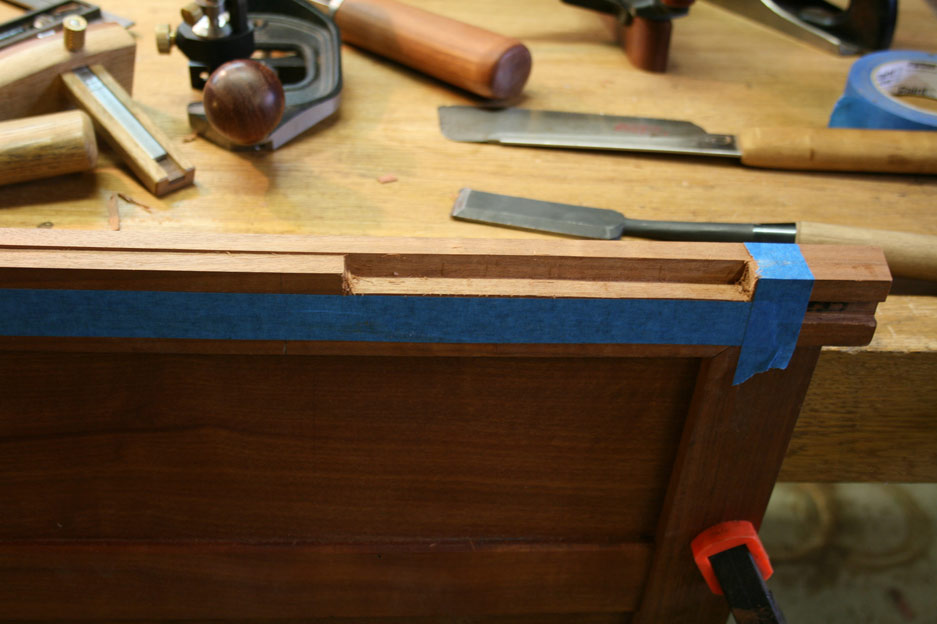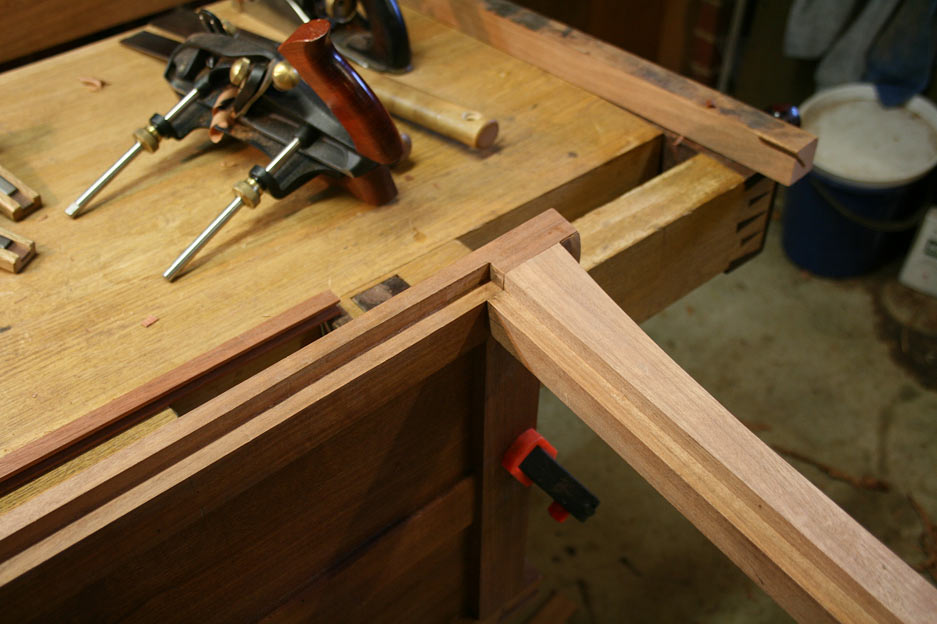Prashun I don't use the rabbet but doing similar things I use a good straight block clamped in my face vise raised up as high as the rabbet. Lay the work piece flat on the bench and lightly pare away.
Jim
ps I do the same thing to clean up a tail that is shortened to cover a drawer bottom groove





 Reply With Quote
Reply With Quote













